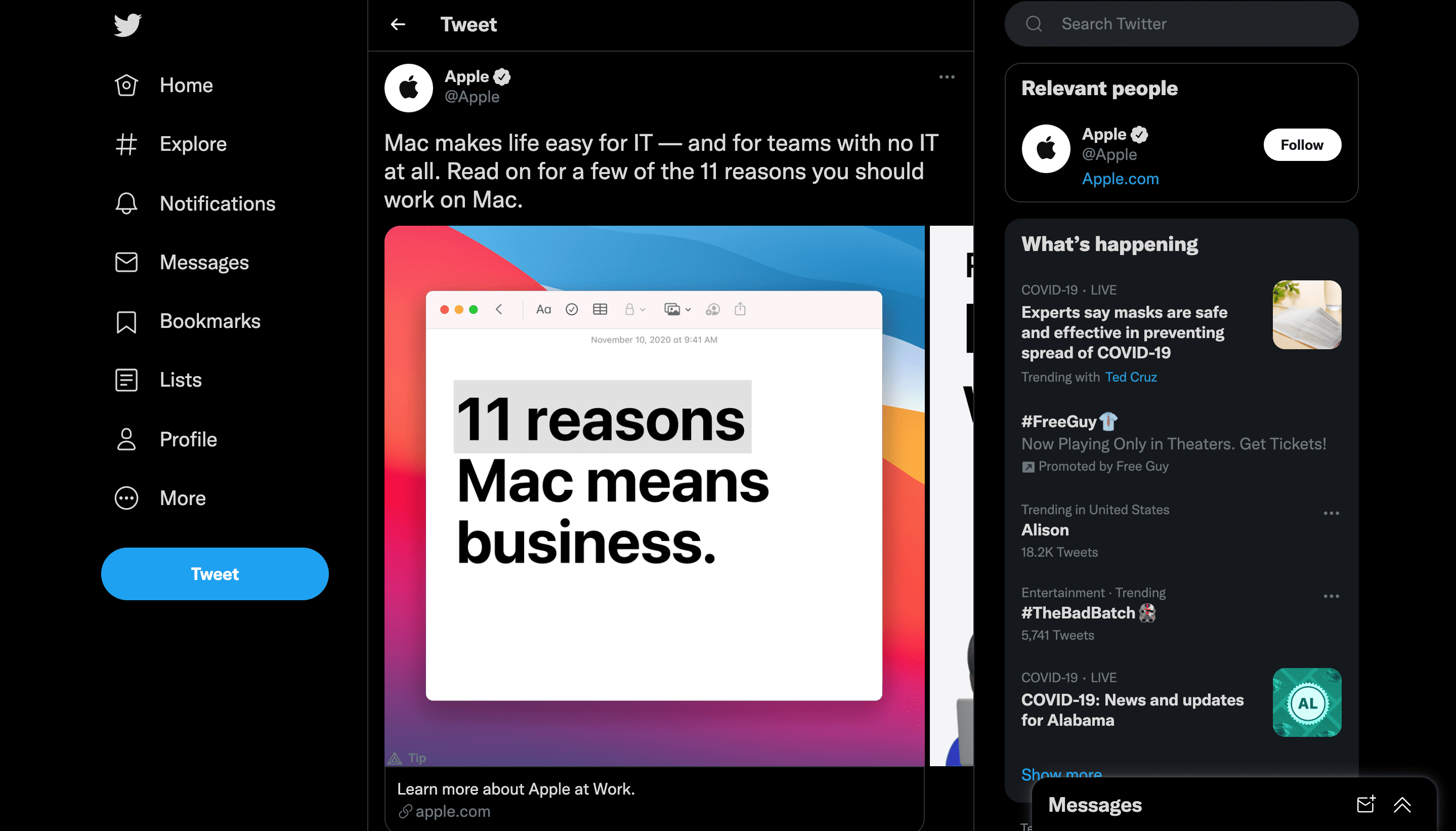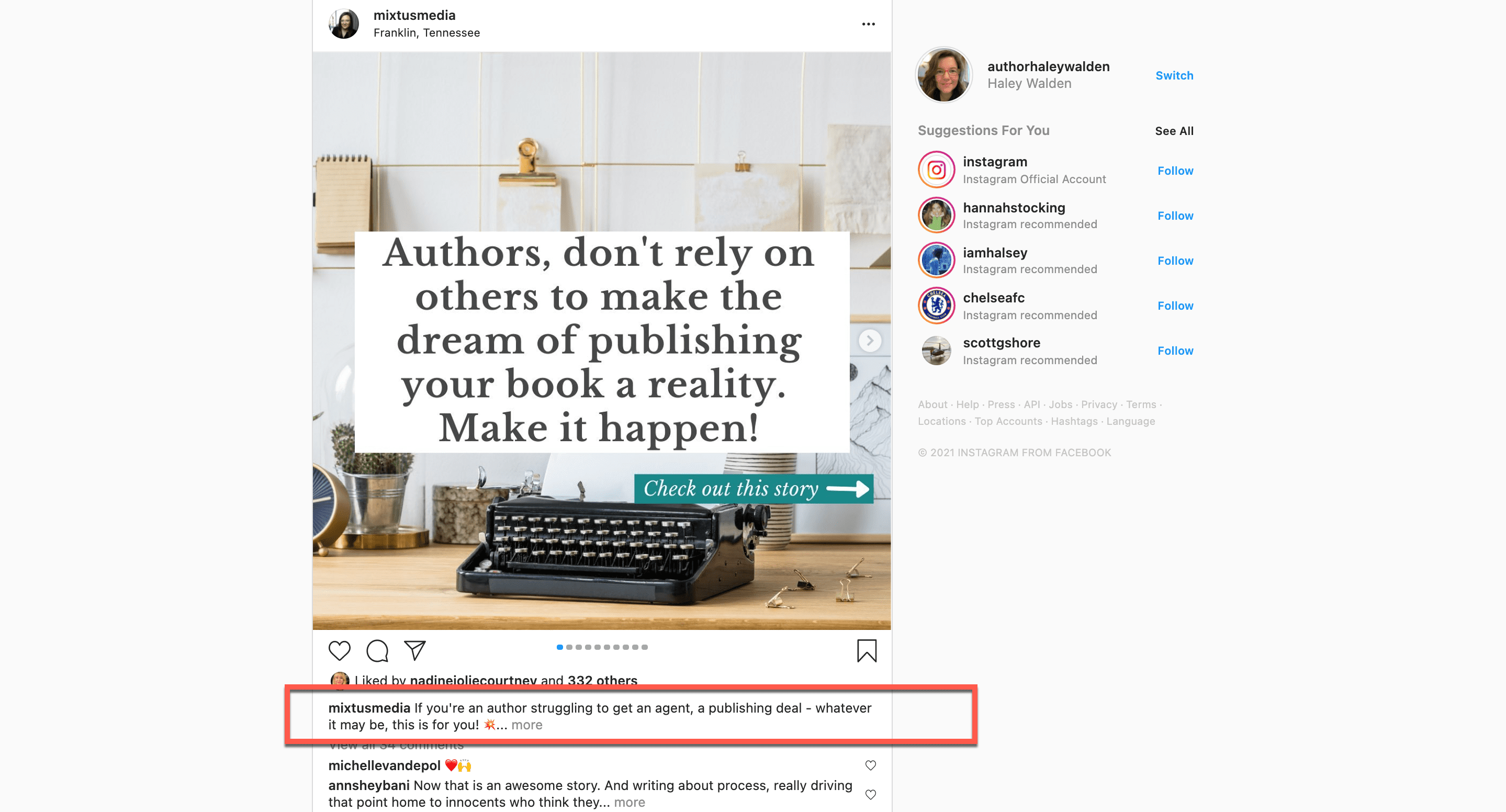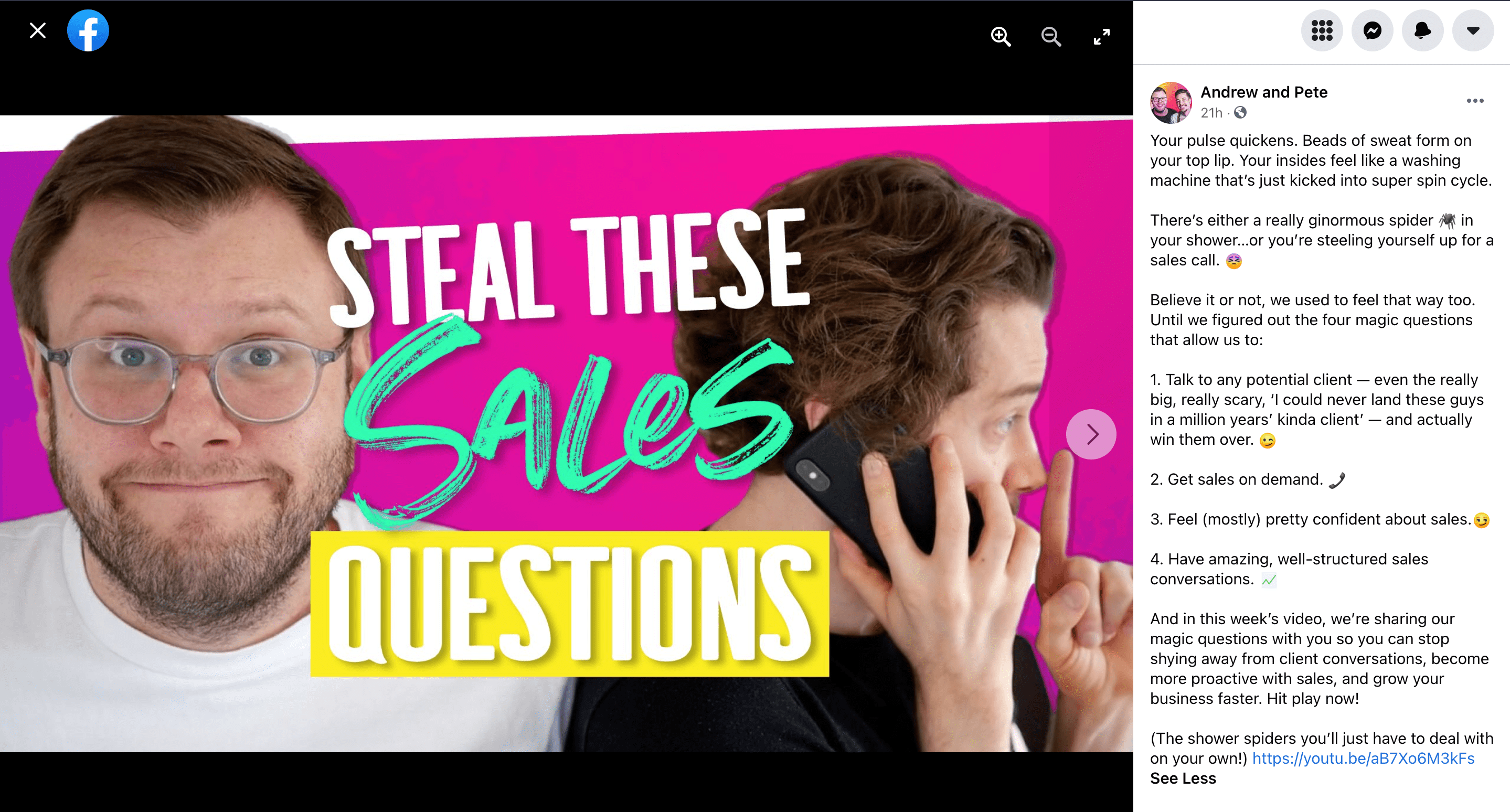Copywriting for social media is an essential part of your overarching digital marketing strategy. Beyond product visuals, video, graphic design, and brand aesthetics, copy is what compels your followers to action. Whether you’re building your email list, directing your followers to your website, boosting engagement, or selling a product or service, your copywriting is what will move users along their customer journey.
Wondering how to better leverage your copywriting for social media? Here are some tips to get you going.
When you consider copywriting for social media, the name of the game is getting your main idea in front of your followers. They’re busy scrolling, so you’ll need to snag their attention. In some cases, a strong and compelling teaser does the trick–but you’ll often need to start out with the lede in front.
Adjust your copy according to the platform and format where you’ll be posting it. Some platforms, such as Facebook and Instagram, allow for fairly long captions. Others, like Twitter, demand shorter copy. (If you’re wondering about character count limits on each social media platform, here’s a guide.)
Take a look at how your posts will be structured, which lines of copy your readers will see first, and how much space you have to squeeze in your main idea before a follower has to click into the post. Consider what your audience will see first: a standard line or two of text before the cutoff? An ad headline?
Anticipating your post’s structure will help you construct the most compelling copy for your audience. If appropriate, you might decide to place your featured copy on an image or in a video, and use your caption to call attention to and support it.
Here’s a great example from Apple’s Twitter account. The caption leads with the main idea, and the attached link builds on the idea that working on a Mac machine is good for business teams of all sizes.

2. Ask Open-Ended Questions.
Asking questions in your copywriting for social media is a great way to get your followers
engaged with your posts. Ask them questions they’ll get excited about answering. People like to share about their experiences and the things they love, so consider incorporating those questions as they relate to your brand.
Take a look at how Iron and Ink Designs led with a question in the following post. “Bookish candles” are popular in the Bookstagram community, so it’s a question that’s sure to get some good engagement.

Alternatively, you can ask your followers what they want to know about you or your brand (within appropriate constraints, of course). Be sure to respond to their answers when possible. If you have a team, delegate engagement to a team member to ensure you have eyes on the comments section.
3. Evoke Emotion.
Depending on your brand and your audience, you’ll want to evoke specific emotions through your copywriting for social media. The emotions you want to stir often depend on the kind of experience you want your followers to have when they encounter your brand. Do you aim to entertain, inspire, or deeply affect your audience?
Consider the desired outcome before you write your copy. That’s what Mixtus Media did in the following Instagram post.

The agency specializes in book marketing for authors, and they shared this inspirational (curated) post for writers who are working to find an agent or publishing deal, but find themselves struggling. Also note that they made sure the main idea would show up for readers before the line break.
On certain social media platforms, hashtags help get more eyes on your content. In particular, Instagram and Twitter utilize hashtags for greater reach. Adjust your hashtag strategy depending on which platform you’re using. For example, Instagram allows users to incorporate up to 30 hashtags per post. Twitter’s hashtags are useful for following along with trending topics and conversations.
Do some preliminary hashtag research before you dive in to ensure you’re landing on hashtags that will actually help boost your post reach. Consider creating unique branded hashtags for your business, but research those first to make sure no one else is using them. Custom hashtags that are specific to product launches or seasonal marketing can help get your social media content in front of more people.
5. Post A Mix of Sales Copy, Curated Content, And Engaging Content.
Copywriting for social media should serve a variety of purposes. For example, you don’t want to post the same types of content, in the same rhythm, all the time. Don’t be afraid to shake things up by sharing engaging content, curated content (that includes your insights!), and a bit of sales copy, too.
If you sell products or services, some posts should be straightforward sales posts that direct your followers to your offer. Other posts should be your own content, or curated content, that’s meant to educate or engage your target audience. Include clear calls to action (CTA) on every post, no matter what the end goal is–whether you want the user to click through to an article or a product page.
Marketing gurus Andrew and Pete do an excellent job of engaging their audience through entertaining, energetic content and copy. Check out this post directing their followers to their latest podcast episode:

The guys grab your attention from the beginning, with a hooky, suspenseful intro that transitions into empathy (“We feel your pain!”), then showcases the benefits of their upcoming episode. Finally, they share the exact results you can expect, along with a clear CTA.
6. Be Conversational.
For the most part, copywriting for social media shouldn’t be too formal. The primary purpose of social media is to connect with other humans in a digital environment. Remember, you’re having a conversation, so shoot for copywriting that comes across as friendly, relatable, and informative.
Take a look at this Facebook post from business and leadership consultant Amber Hurdle. She leads with a hard-hitting, emotional topic that everyone can relate to: shame. Then, she builds on ways her audience can overcome it, creating a safe space for her followers to share their experiences. Again, here’s a great example of a post that leads with the main idea before building on it.

As you build this relationship with your audience, keep your brand voice in mind. Your exact tone can range from casual and pithy to a bit more businesslike, depending on your brand. The main idea is to remain open and approachable, because your ultimate goal here is to connect with your followers and build trust.
7. Maintain A Consistent Voice Cross-Platform.
Keeping your brand voice consistent across all platforms is essential for building a strong online presence. A consistent brand experience extends beyond graphics and visuals, all the way through to your copywriting for social media. Using popular social media plugins on your website can help bring your brand voice from your social media platforms to your WordPress website
I like to think of brand voice copywriting as “staying in character,” much like an actress needs to maintain an unbroken and consistent performance as whoever she’s portraying. If you’re struggling to nail that brand voice, take a few minutes to get reacquainted with your established voice and the “character” of your brand. Audit your platforms from time to time to ensure you’re providing that consistent delivery.
Wrapping Up
Now you’re ready to share some stellar copywriting for social media. As a quick recap, let’s review the tips:
- Keep the main idea (or a compelling teaser) front and center.
- Ask open-ended questions your followers will enjoy answering.
- Evoke emotion in your copywriting (that fits your brand voice, of course).
- Use hashtags in your copy for a broader reach.
- Mix it up with engaging original, curated, and sales content.
- Stay conversational and approachable. It is social media, after all!
- Keep your brand voice consistent, regardless of what platform you’re posting to.
Do you have any copywriting for social media tips you’d like to share? Drop us a comment below and let us know!
Featured image via Nadia Snopek / shutterstock.com









Thank you so much for this awesome article. Copywriting is one of my favorite profession. I love to read this whole content.
Great article. Just started working as a copywriter for social media and I find this very helpful!!
This has been super useful! I am new to blogging and sometimes finding the right information can feel like going through a maze. This straight-to-the-point article made the process of content creation simple and doable. Thanks for this!
Thank you for the article. Copywriting is something that i struggle with. I have realized that it is best to lead with the main idea if the idea is controversial or odd. Like “Here is why moving your office is hurting your SEO”. For example